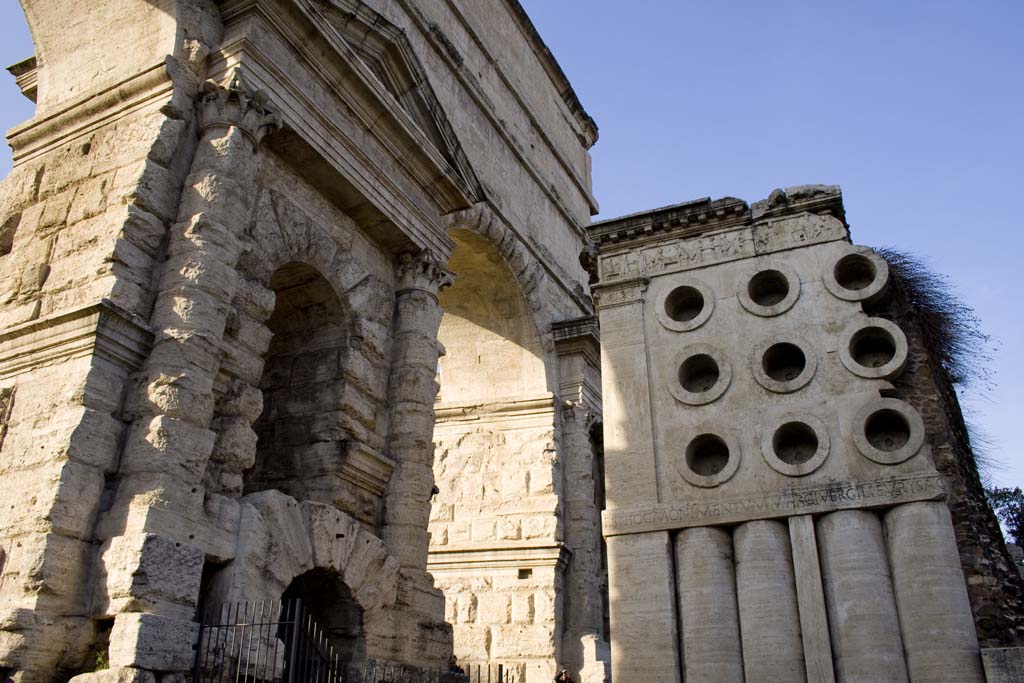BREAD, CIRCUSES, AND MASS PRODUCTION
Which make for a welcome to late Republican Rome, circa 50-20 BC, on the part of proud Marcus Vergilius Eurysaces the baker, wanting to be remembered at the crossroads of Praenestinan and Labicana Ways, where 5 aqueducts met—amazingly accommodated despite the construction of Porta Maggiore by Emperor Claudius in 52. The signs of mass production—holes of kneading machines—become outlandish decorative scheme, recalling the figuration of aristocracy, horizontally, then tilted upwards to become monumental, columnar.
EST HOC MONIMENTVM MARCEI VERGILEI EVRYSACIS PISTORIS REDEMPTORIS APPARET
"This is the monument of Marcus Vergilius Eurysaces, baker, contractor, public servant—OBVIOUSLY."
